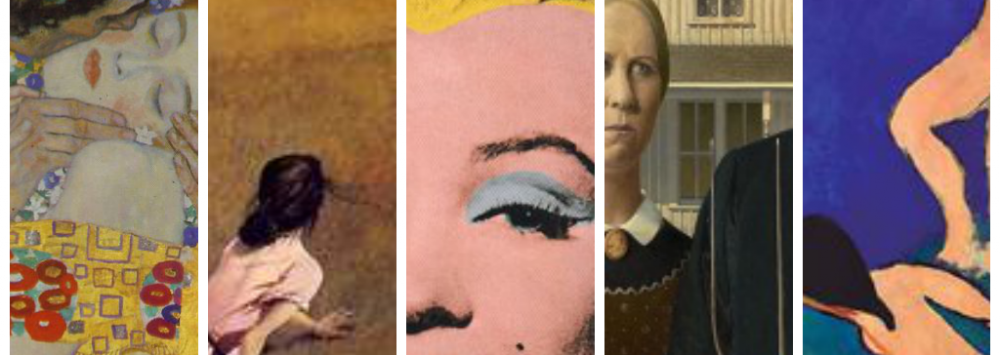Pablo Picasso–Joey
Pablo Picasso was born on October 25, 1881 in Malaga Spain. He studied art in Madrid in 1897, and Barcelona in 1897. When in Barcelona, Picasso became closely associated with a group of poets, writers, and artists who gathered regularly at a cafe known as The Four Cats. In 1904, Picasso moved to France where he would spend much of his time for the remainder of his life. Picasso is important to the Cubist movement because it was his painting, titled Les Demoiselles d’Avignon that ushered in the Cubist movement.
Cubism, like expressionism and Fauvism, took an even further step from reality, depicting it in an abstract form that was revolutionary. Artists in this genre played with the dimensions of reality, taking 3-D forms and depicting them by using 2-D shapes. It was common for pieces in this genre to involve collages, to use multi-media, and to utilize the effects of juxtaposition.
Picasso was extremely versatile in the way he created art. Besides oil painting, Picasso is famous for cutting and pasting pieces of newsprint and color paper onto canvas as is evident in his piece, Bottle of WIne Glass on a Table. While in France, Picasso also worked with ceramics and experimented with printmaking. Picasso found inspiration in many things, and during the creation of Les Demoiseles d’Avignon, he had been fascinated with pre-Roman Iberian sculptures and African and Oceanic art.
Picasso’s work seems similar to that of Robert Rauschenberg. Rauschenberg is famous for his “combines,” in which non-traditional materials and objects were employed in innovative combinations. Rauschenberg, like Picasso, worked in painting and sculpting, combining these these two, in a way, in his collages.
I enjoy Picasso’s work because it still seems innovative today, more than a century since its inception. My favorite work by Picasso is Guernica, a massive 11 foot by 64 foot masterpiece depicting the bombing of the tiny spanish town of Guernica in northern Spain during the Spanish Civil War (1937). Instead of giving his piece to Spain, he kept it in Paris, and would only allow it to be shown in his home country once the fascist government under Francisco Franco relinquished it’s power, which wasn’t until Franco’s death in 1975. One of the most famous artist of the 20th century, Picasso did more than just usher in many of the new artistic movements of that period, but he also played a role in what was happening in the world around him.
Bibliography:
Voorhies, James. “Pablo Picasso (1881–1973)”. In Heilbrunn Timeline of Art History. New York: The Metropolitan Museum of Art, 2000–.http://www.metmuseum.org/toah/hd/pica/hd_pica.htm (October 2004)
Rewald, Sabine. “Cubism”. In Heilbrunn Timeline of Art History. New York: The Metropolitan Museum of Art, 2000–.http://www.metmuseum.org/toah/hd/cube/hd_cube.htm (October 2004)
Public Broadcasting Station. “Robert Rauschenberg.” American Masters. Last
modified October 28, 2006. Accessed April 3, 2014. http://www.pbs.org/wnet/
americanmasters/episodes/robert-rauschenberg/about-the-artist/49/.






